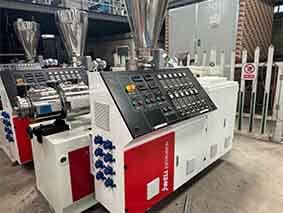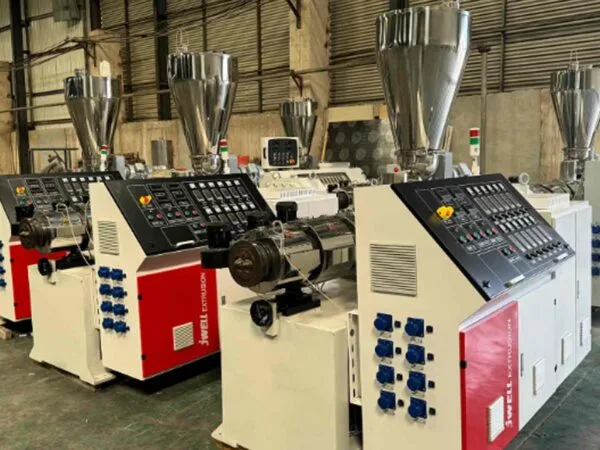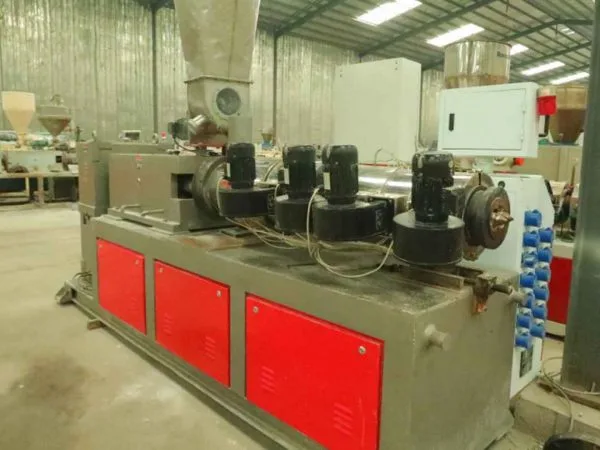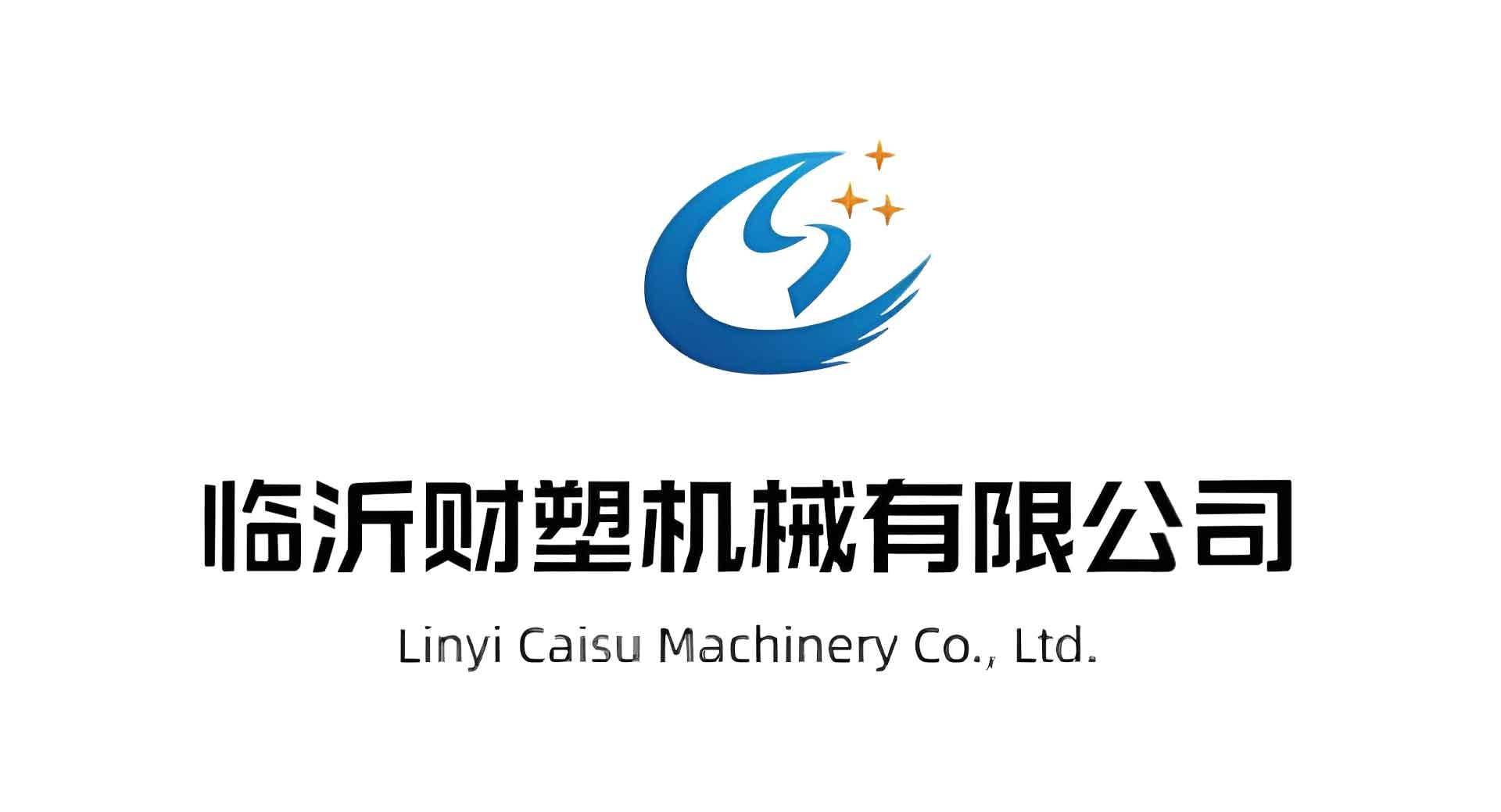Welcome to My Blog!
Before we dive into the content, I’d love for you to join me on my social media platforms where I share more insights, engage with the community, and post updates. Here’s how you can connect with me:
Facebook:https://www.facebook.com/profile.php?id=61567891941530
Now, let’s get started on our journey together. I hope you find the content here insightful, engaging, and valuable.
Caisu Machinery sells a variety of used plastic pipe production equipment. The products are of high quality and low price. Welcome to contact us for consultation and purchase. We will be happy to serve you.
Table of Contents
Introduction
Are you looking to expand your piping production—or considering a cost-effective route with used equipment? A well-engineered PVC plastic pipe extrusion line determines your product quality, operational stability, and cost efficiency. This guide will walk you through all the key aspects—from essential components to maintenance and second-hand advantages.
Understanding the PVC Plastic Pipe Extrusion Line Basics

What Is a PVC Plastic Pipe Extrusion Line?
A PVC plastic pipe extrusion line processes PVC resin into quality pipes through an extrusion process. Key modules include feeding system, extruder, vacuum calibrator, haul-off, cutter, stacker, and PLC control. Each part plays a critical role in control of dimensions, wall thickness, and finishing.
How It Works: Step-by-Step
- Feeding & Mixing: PVC granules, additives, colorants, and stabilizers are blended and fed into the extruder.
- Melting & Plastification: The twin-screw extruder melts the resin under high temperature.
- Shaping Through a Die Head: The molten mix passes through a die head that defines diameter and wall thickness.
- Vacuum Calibration & Cooling: The pipe moves into a vacuum tank, setting its shape and temperature.
- Haul-Off Mechanism: A synchronized belt pulls the pipe at the right speed.
- Cutting & Stacking: The pipe is cut to fixed lengths and stacked or coiled for distribution.
Machine Configurations & Specifications
Different capacities and diameters require different line setups. Here’s a comparison at a glance:
| Line Scale | Extruder (mm screw) | Pipe Diameter Range | Output Capacity (kg/h) | Typical Use Cases |
|---|---|---|---|---|
| Small-scale | 45×2 twin-screw | 16–32 mm | 50–100 kg/h | Plumbing, irrigation, DIY |
| Mid-scale | 65×2 twin-screw | 20–63 mm | 100–200 kg/h | Residential & light industrial |
| Large-scale | 75×2 twin-screw | 50–160 mm | 200–400 kg/h+ | Municipal water, drainage |
Why Choose a Certified Second-Hand PVC Plastic Pipe Extrusion Line?

1. Significant Investment Savings
Refurbished lines offer the same core performance—often saving 40–60%. This helps you allocate budget toward auxiliary upgrades, automation, or packaging systems.
2. Proven Performance with Shorter Delivery
Used lines generally have shorter refurbishing cycles, shipping, and installation phases—helping you launch operations in weeks rather than months.
3. Reliability Through Refurbishment
Every used line undergoes physical cleaning, barrel resurfacing, PLC upgrades, PLC re-wiring, motor checks, spare screw sets, and calibration tests—ensuring performance akin to new equipment.
4. Flexibility & Upgradability
Caisu’s certified second-hand lines can be easily customized with new dies, vacuum tanks, or digital controls as your market demands grow.
5. Sustainability & Compliance
Buying pre-owned reduces your carbon footprint and supports corporate sustainability goals—no compromise on performance or quality.
Operation & Quality Control Insights
Raw Material Handling
Moisture-controlled storage avoids quality issues. PVC masterbatch, stabilizer blends, and proper mixing play a role in wall strength and appearance.
Calibration & Temperature Control
Precise die-to-tank temperature profiles and vacuum control ensure pipe roundness and wall accuracy. ISO tolerance standards are easily met with a calibrated second-hand line.
Monitoring & Automation
Modern PLC units monitor torque, speed, pressure, and temperature. Alarms trigger instant stoppages to prevent defective outputs.
Sample Testing Protocol
Operators perform regular test cuts to measure outer diameter, wall thickness, ovality, and final cure hardness before production continues.
Real-World Applications of PVC Plastic Pipe Extrusion Lines
- Building & Construction: Pressure pipes for plumbing, waste, gas lines
- Agriculture: Irrigation, small-diameter drip systems
- Industrial Installations: Conduits and protective tubing
- Outdoor & Solar Wiring: Cable conduits and drainage solutions
Installation, Training & Ongoing Support

Site Planning
Require even flooring, proper foundation, and stable power supply with appropriate voltage and capacity.
Setup & Debugging
Caisu technicians handle mechanical alignment, PLC setup, temperature mapping, and speed calibration to optimize sample output.
Operator Training
Hands-on training includes start-up procedures, production control, maintenance routines, troubleshooting, and spare part usage.
Preventive Maintenance
Scheduled inspections include barrel honing, bearing evaluation, PLC backup, belt checks, and electrical safety audits.
Spare Parts Supply
Fast shipping of spare screw kits, die rings, belts, bearing sets, transmitter sensors and seal kits ensures minimal downtime.
Common Troubleshooting Tips
- Pipe Ovality: Fix vacuum issues or temperature misbalance
- Surface Marks: Clean die and reduce moisture content
- Gearbox Noise: Lubricate shafts or align gearbox
- Frequent Breakdowns: Reset alarm thresholds or temperatures
- Wall Variations: Redo die head adjustments and vacuum tank height
Keeping Your Production Profitable
- Use masterbatches for color consistency and UV resistance
- Recycle trim and regrind into non-aesthetic products
- Monitor energy consumption via calibrated meters
- Schedule audits to assess machine ROI, output, and wear patterns
Conclusion
Choosing a refurbished PVC plastic pipe extrusion line through Caisu means smart savings, fast delivery, and reliable performance. You get performance nearly identical to a new line, with added flexibility to grow your output and achieve higher efficiency.
Let’s help you elevate your pipe production. Whether you’re expanding small-batch operations or adding industrial-scale output, our expert team supports you every step of the way.
FAQ
Is a second-hand extrusion line reliable for long-term operation?
Yes. These lines are fully inspected, refurbished, and certified—designed to deliver consistent production and reliability comparable to new equipment.
How do I choose the right line capacity?
Start with your key parameters—daily output target, pipe diameters, and application. We then match a line that meets those specs and supports for future expansion.
What’s the typical ROI from used extrusion equipment?
Most users recover investment within 12–24 months due to lower initial cost and strong production efficiency.
Can we add future upgrades or automation?
Absolutely. Second-hand lines are modular—upgrades like new dies, higher-capacity extruders, or digital controls can be integrated as demand grows.
Do you provide spare parts and service after installation?
Yes. We maintain stock and fast shipping for essential spares. Ongoing support ensures your line runs smoothly throughout its lifecycle.





